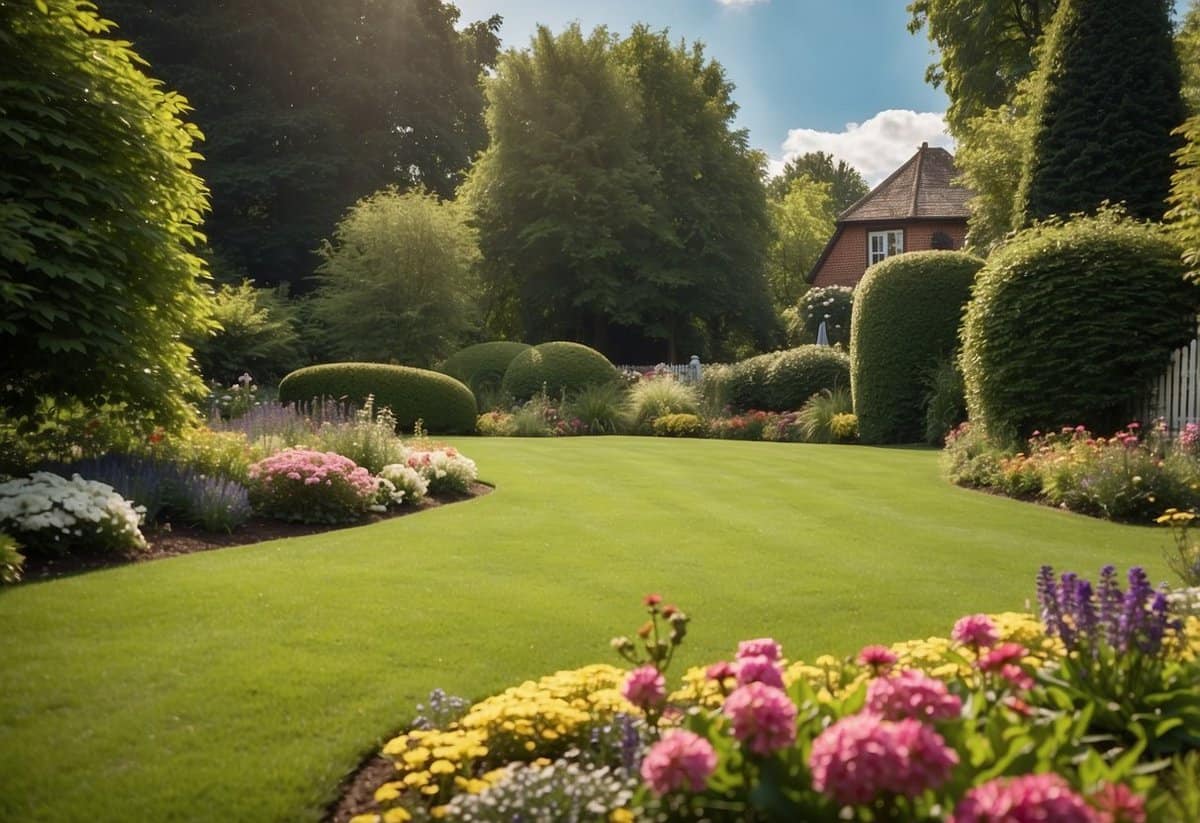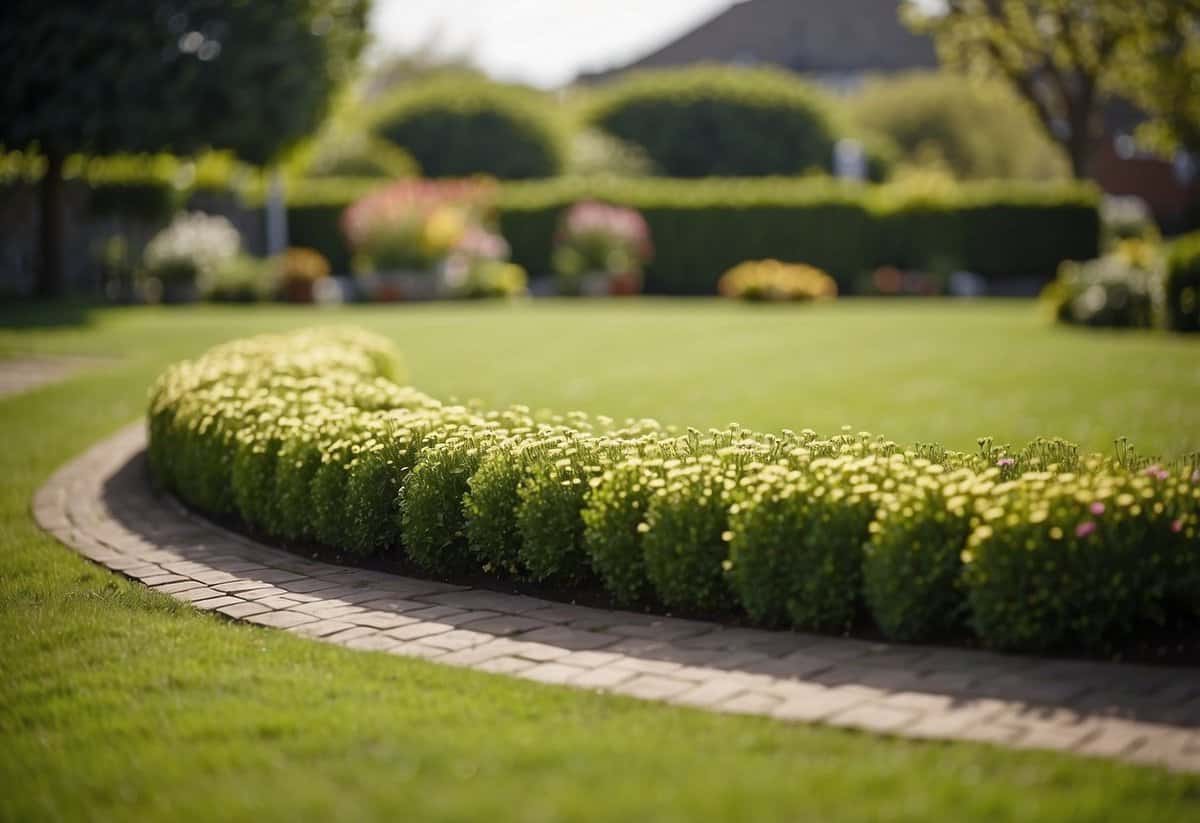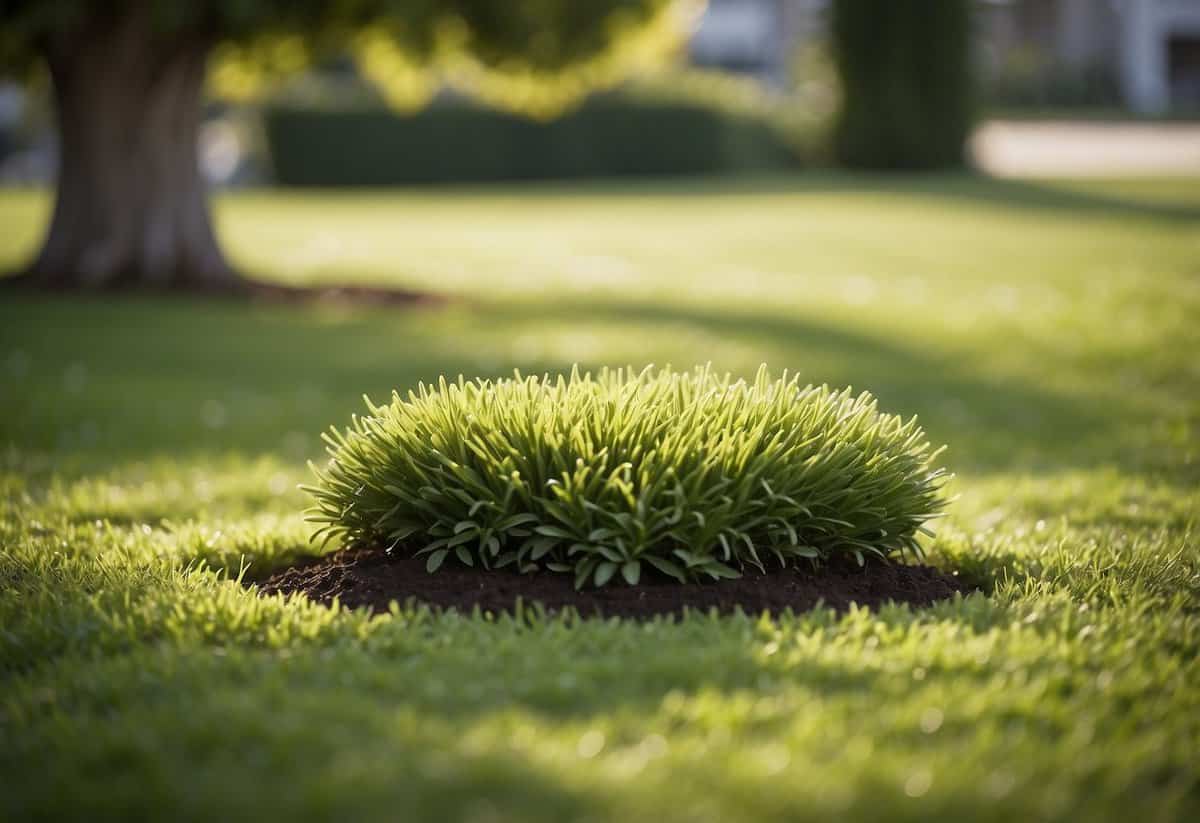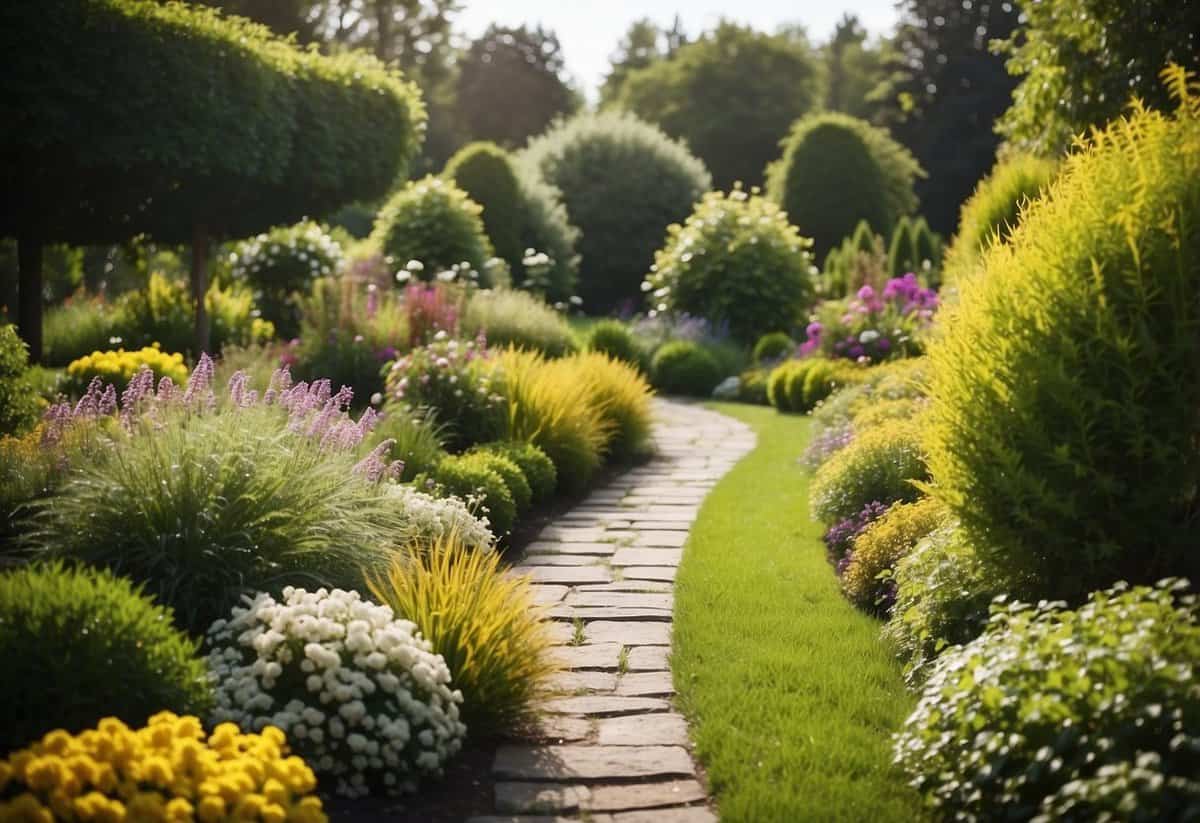Garden Lawn Tips: Easy Ways to Keep Your Yard Green and Healthy
Maintaining a healthy and beautiful garden lawn can be quite fulfilling. A well-kept lawn not only enhances the beauty of your home, but it also provides a pleasant space for relaxation and activities. Whether you’re a beginner or have some experience, there’s always something new to learn about keeping your lawn in top shape.

How can you ensure your lawn stays green and thriving year-round? From understanding soil types to choosing the right grass, and managing weeds, many factors contribute to a thriving lawn. With the right tips and techniques, you can transform your lawn into the envy of the neighborhood.
1) Watering Schedule

To keep your lawn healthy, aim to water it once or twice a week.
Your lawn needs about 1 to 1.5 inches of water weekly. This can come from rain or watering.
Early morning is the best time. This helps the water soak in before the sun gets too hot.
Use a sprinkler for even coverage and avoid watering at night.
2) Mow When Necessary

Don’t mow your lawn just because it’s been a week since the last cut. Grass height and condition matter more than time.
Avoid mowing wet grass. Wet grass can clump and clog your mower, making it harder to get a clean cut. It can also lead to uneven patches.
Mid-morning, between 8 a.m. and 10 a.m., is the ideal time to mow. Dew has dried, and it’s not too hot yet.
3) Weed Regularly

Weeding your garden regularly keeps your lawn healthy. Weeds compete with your plants for nutrients and water. They can quickly take over if left unchecked.
Pulling weeds by hand works well. Grab the plant at the base to remove as much of the root as possible. For tougher weeds, use a garden fork or slim trowel.
Hand weeding after a rain makes the job easier. The soil is softer, and roots come out more smoothly. Using mulch in garden areas helps prevent new weeds from sprouting.
4) Aerate the Soil

Aerating your lawn helps it breathe and lets water, nutrients, and air reach the roots. This helps your grass grow stronger.
Aeration is best done in early spring or fall for cool-season grasses and late spring for warm-season varieties.
Look for signs like soil compaction or poor grass health as indicators that it’s time to aerate. Learn more about aeration timing here.
Water your lawn the day before or aerate after a light rain. Use an aerator tool and make two passes over high-traffic areas for best results. For more tips on aerating, visit this resource.
5) Fertilize Appropriately

Fertilizing your lawn is key to keeping it green and healthy. Timing is important. For cool-season grasses, apply fertilizer in early spring and fall. For warm-season grasses, late spring through summer is best.
Use a spreader for even application. Hand scattering often results in patchy growth. Choose between organic and synthetic fertilizers based on your lawn’s needs.
Always lightly water your lawn after fertilizing. This helps nutrients penetrate the soil. Aim to water in the early morning or late afternoon to reduce evaporation.
6) Use Mulch

Mulch helps retain moisture in your garden soil. It also suppresses weeds and adds nutrients as it breaks down. Choose organic mulch like wood chips, straw, or leaves.
Mulching too early in spring can slow soil warming. Wait until mid- to late spring. Avoid mulch “volcanoes” around tree bases. This can harm trees. Keep mulch away from your house to prevent pests. For more tips on mulching, visit HGTV or Bob Vila.
7) Control Pests Naturally

Keeping pests out of your garden can be easier with natural methods. A simple way is using vegetable oil spray. Mix 1 cup of vegetable oil, 1 tablespoon of mild soap, and 1 quart of water in a spray bottle and use it on your plants.
Another effective method is diatomaceous earth. Sprinkle it around your plants to create a barrier for crawling insects.
Keep your garden tidy by removing dead plants and debris. This helps prevent pests from making a home in your garden.
8) Choose the Right Grass

Choosing the right grass for your lawn depends on your local climate. If you live in a cooler area, Kentucky bluegrass might be a good option. It thrives in temperatures between 60° and 75°.
For hotter climates, consider Bermuda grass. It grows well in temperatures ranging from 80° to 95° and handles heat well.
In shady areas, St. Augustine grass is a good choice. It tolerates shade better than other types of grass and requires less direct sunlight.
Remember to test your soil to find out its pH level. Certain grasses grow best in specific soil conditions. For example, centipede grass likes acidic soil.
9) Edge Your Lawn

Edging your lawn gives it a sharp, clean look. Start by mowing the lawn. Trim the edges where grass meets sidewalks, driveways, or flower beds.
You can use a manual edger or a shovel. Drive the tool into the soil to create a neat edge. Keep it straight for a defined line.
Pause to check your work. Make adjustments if needed. This attention to detail will make your lawn appear professionally maintained. Learn more about how to edge a lawn.
10) Reseed Bare Spots

Bare spots in your lawn can make it look patchy. To fix this, you need to reseed those areas. Start by examining the lawn and identifying the reason for the patches.
Prepare the soil by loosening it up. Scatter grass seed evenly over the area. Lightly rake to cover the seeds with soil.
Water the area regularly until the grass starts to grow. Stay consistent with your watering to ensure the best results. For more detailed instructions, visit How To Fix Bare Spots In a Lawn – Bob Vila.
Understanding Lawn Types

Choosing the right type of lawn for your yard is essential. You’ll need to know about warm-season and cool-season grasses to make the best decision.
Warm-season Grasses
Warm-season grasses grow best in hot climates and stay green during the warmer months. These grasses thrive when temperatures range between 80°F to 95°F. Popular types include Bermuda, Zoysia, and St. Augustine.
Bermuda grass is known for its durability and fine texture. It’s a great choice if you need a tough, fast-growing lawn. Zoysia grass is thick and stays green most of the year, even tolerating cold weather better than other warm-season grasses. St. Augustine grass, which has a bluish-green color and coarse texture, does well in hot and humid climates.
Each grass type has specific maintenance needs. For example, Bermuda grass needs regular mowing and fertilizing, while Zoysia grass benefits from less frequent mowing and is more drought-tolerant. Knowing these details helps you keep your lawn healthy.
Cool-season Grasses
Cool-season grasses are best for regions with cooler temperatures. They flourish when temperatures are between 60°F to 75°F. Common types include Kentucky Bluegrass, Fescue, and Ryegrass.
Kentucky Bluegrass is a popular choice due to its rich color and fine blades. It’s often used in lawns and sports fields. Fescue varieties, such as Tall Fescue and Fine Fescue, are versatile and can handle shade as well as wear and tear. Ryegrass is known for its rapid growth and is often used for overseeding to establish a dense, green lawn quickly.
These grasses have different watering and mowing needs. Kentucky Bluegrass, for example, requires frequent watering, while Fescue is more drought-tolerant. By understanding the specific needs of your chosen grass type, you can ensure it stays healthy and vibrant year-round.
Watering Tips

Proper watering is crucial for a healthy garden lawn. You need to know the right schedule and techniques to make sure your lawn stays lush and green without wasting water.
Correct Watering Schedule
Water your lawn early in the morning. This allows the grass to absorb water before the sun evaporates it. For most lawns, watering twice a week is enough to keep them healthy. Your lawn needs about 1-2 inches of water weekly, depending on rain levels and temperature.
Avoid watering during the middle of the day. The sun is strongest, and water evaporates quickly. Watering in the evening can be bad too. It leaves the lawn wet overnight, which can cause diseases. Stick to a regular schedule for the best results.
Efficient Watering Techniques
Using the right tools and methods can save water and keep your lawn looking great. A sprinkler system is very effective because it spreads water evenly. Place a cup in the yard and measure how long it takes to collect 1 inch of water. This will guide your watering times.
A soaker hose is also useful for watering deeply. However, avoid handheld hoses because they are less consistent. You can also improve efficiency by grouping plants with similar water needs together. Mulching around plants and trees helps retain moisture and reduces the need to water frequently.
For more details, check out smart and effective ways to water your lawn.
Maintaining Soil Health

Keeping your garden lawn healthy starts with soil health. Good soil provides nutrients, supports plant growth, and enables water retention and drainage.
Soil Testing Methods
Testing your soil helps you understand its composition and nutrient levels. Begin by collecting samples from different parts of your lawn. Use a clean trowel to obtain soil from the top 6 inches. Combine these samples in a clean container.
You can send your sample to a soil testing lab. They will analyze it for pH, nutrient content, and organic matter. This information will help you know what amendments your soil needs. The University of Minnesota’s Soil Testing Lab is a great resource for accurate soil testing.
DIY soil test kits are also available. These kits can be purchased online or at garden centers. They provide a quick analysis of soil pH and basic nutrients. Follow the instructions carefully to get accurate results.
Improving Soil Quality
Once you know what your soil lacks, you can take steps to improve it. Adding organic matter like compost enriches the soil and improves its structure. Compost adds essential nutrients and helps the soil retain moisture. Spread a 2-3 inch layer of compost over your lawn and work it into the topsoil.
Another way to enhance soil is by using mulch. Mulch helps maintain moisture and regulate soil temperature. It also decomposes over time, adding nutrients to the soil. Apply a thick layer of mulch around plants and over bare soil areas.
Soil aeration is another method to boost soil health. It involves making small holes in the soil to allow air, water, and nutrients to penetrate. You can use a garden fork or rent an aerator machine for larger areas. This process helps reduce soil compaction and promotes root growth.
Maintaining good soil health ensures your garden lawn thrives, giving you a lush and green space to enjoy.







